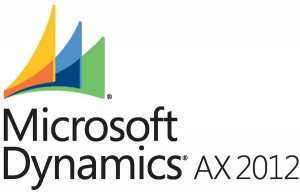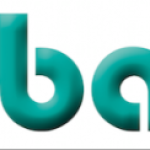Prediction for the Future of Dynamics AX – User Expectations Grow
This is the third part of my article series regarding the future of Dynamics AX.
Third claim: Users expect more
When Dynamics AX (at that time Axapta) started its life around the late nineties, Windows was definitely the modern, fresh and market leading operating system. The team behind AX had a few years before worked on a OS/2 version but decided to ditch the dual-platform strategy and focus entirely on Windows.
One of the reasons was most likely the fast adoption of the Windows platform in the market and the future growth aspects. Much of this was driven by the popularity of Windows 95 and the consistent user experience it provided. Back then as I remember, some of the key new innovations were the ability to share data in a simple way between desktop applications and the quite stringent user interface across apps. Before Windows it was not always clear how to open and close apps, files, share data (cut/copy/paste) etc. or simply just move around in the app.
The heritage of Windows and other MS apps
The Windows operating system and its multi-document-interface (MDI) paradigm was the premise for the design of AX. During the first years we had to invent new concepts suitable for a data-intensive global ERP system. One example is the so-called “intelliMorph” system (what a name!) which gave the UI Forms its ability to resize according to the content. At that time it was quite unique in combination with the underlying feature keys and the dictionary model designer. The model designer (“MorphX”) ensured high developer productivity and a fairly consistent user experience across the application (although some parts went a bit astray over time).
In short – during the first 10 years of the life of Dynamics AX the user experience was, in my opinion, very modern and appreciated by the users, because the comparison to other solutions was so much worse.
From the mid 00’s with the growing influence by the Microsoft ownership, the UX of AX aligned more closely to that of Microsoft Office; not a bad thing, but quite difficult because there are still big differences from an ERP solution to Word, Excel, Outlook and PowerPoint. However, the users seemed to appreciate the familiarity with Office – and the market share of AX just grew.
Back to the future
Now, where do I want to go with this…. with the history lesson in mind, my claim is that what users are really looking for is some familiarity across the apps they use. They don’t want to have to spend time learning lots of different complicated key sequences, menu structures, hover mechanisms etc. It’s a bit similar to a car in that you would really get annoyed if the car manufacturers placed the pedals differently (as you probably have experienced they actually do that with some of the arms for turn signals, wipers, etc., and that’s bad enough).
Back then, Windows was setting the standards. I don’t think this is the case any longer. With the proliferation of devices, the introduction of touch interfaces, the internet browsers and even Facebook, the de facto standards are nowadays legion.
Users have over the years been accustomed to really simple user experiences (meant the positive way) where they don’t have to think too much about how to work the application. And new intuitive gestures have been introduced and adopted. Many times I still find myself trying to right-swipe on objects on my Windows 8 tablet because that’s how you delete stuff in iOS…
The browser user experience is in my view probably the most common user experience paradigm today. This includes much more WYSIWYG than the original Windows experience and it is in nature a single-document-interface (SDI) paradigm rather than the MDI of Windows.
The UX is not just editing the data model
ERP solutions and business applications in general have to be designed simpler. Even if this means we have to design eight simple pages instead of one complicated form. The reason being that users expect more (simplicity!).
For quite many business applications (including Dynamics AX) this basically means giving up on the idea that the application is nothing more that a forms representation of the data model.
Apps need instead to be designed for the purpose they serve. For some years Microsoft has talked about role-tailored user experience for Dynamics AX. This is in fact absolutely the right way to go, but the fact is that very little has happened. Introducing a ribbon and some role centers does not make it at all.
Process is king
We have to get away from the data model and into the seats of the users. I know why it’s difficult – it requires someone from the development team in detail to understand the business processes and not just the underlying data model. It is hard work and on top of it all it needs to be designed to be customizable and flexible. This means it is not enough to create applications which can support a given process – it should be able to accommodate process variations as well.
In a solution like Dynamics AX with thousands of data tables and forms, it’s a very big task to make that switch – even for Microsoft. Nonetheless I believe that the solutions to rule the future are the ones truly embracing process from the very beginning. And then working on which data to store afterwards.
The two keywords to look for are Process and Simplicity – two words quite hard to link to Dynamics AX these days. Let’s hope there are some goodies on the way we don’t know about.
This concludes my postings for now on the future of Dynamics AX. Feel free to comment as you please.
Disclaimer: Since I am merely following the evolution of Dynamics AX from a distance and am not part of Microsoft, my predictions are of course only speculation in relation to the market of ERP and line of business applications.
Source: Flemming Louw-Reimer










